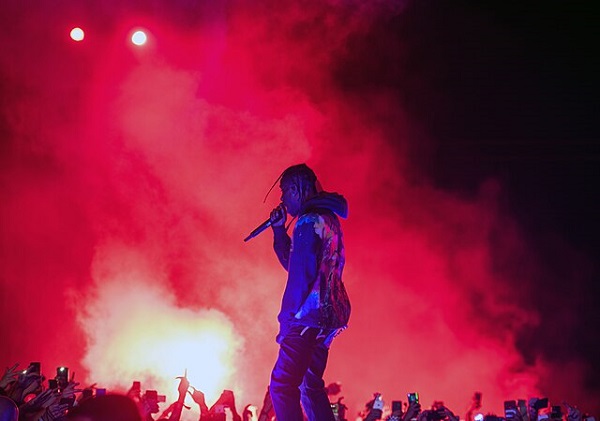.png)

Gurumurthy, ex-central banker and a Wharton alum, managed the rupee and forex reserves, government debt and played a key role in drafting India's Financial Stability Reports.
October 20, 2025 at 5:39 AM IST
The next financial crisis will not look like the last one. It won’t involve a few banks collapsing or a stock market panic. It will come from the opaque rise of private credit and insurer-linked shadow finance, turbocharged by record debt, geopolitical frictions, and a techno-financial mania that smells suspiciously like AI.
Central banks have spent the last 15 years teaching markets a dangerous lesson: every tremor will be soothed, every loss backstopped. “Whatever it takes” has become a permanent policy. The balance sheets of leading central banks now exceed $30 trillion. Markets have learned that moral hazard pays: every tightening cycle ends in a bailout, every fall in valuations triggers a new acronym-laden support scheme. Fiscal and monetary authorities are no longer guardians of stability; they are underwriters of asset prices.
The arithmetic behind this model is fragile. Global public and private debt is said to have surpassed $300 trillion — about 340% of world GDP. Governments borrowed to cushion pandemics and energy shocks; corporates and households gorged on cheap credit. Debt is now both the lubricant and the anaesthetic of capitalism. Ironically, it is also why central banks dare not normalise policy. Every rate rise now threatens not just markets but sovereign solvency.
Balance sheets have become theatrical. Companies massage earnings, banks hide duration risk behind derivatives, and asset managers price risk as if liquidity were eternal. The 2023 US regional bank tremors offered a glimpse behind the curtain: unrealised losses on “safe” government bonds nearly triggered systemic panic. The Federal Reserve’s rescue--lending against those bonds at face value, through the Bank Term Funding Program — was less a solution than a confession. In a debt-saturated world, even paper losses can undermine faith.
Shadow Surge
Yet the real drama lies beyond banks. Non-bank institutions now hold the bulk of global financial assets--private credit, private equity, hedge funds, and insurers. They lend, leverage, and transform maturities like banks, but without disclosure, regulation, or central-bank access. Private credit alone has ballooned into the trillions, offering opaque loans to companies beyond public scrutiny.
Insurers, managing over $8 trillion in assets, are deep in the shadows. A quarter of their bond portfolios consists of private placements, often rated through confidential “private letter” scores. These institutions, entrusted with retirees’ savings, increasingly resemble leveraged credit funds. Yield obsession quietly kills prudence. Private equity has accelerated this drift, partnering with insurers to create hybrid shadow banks holding illiquid, model-priced assets. Complexity is both shield and selling point.
Overlaying this is a geopolitical order that no longer guarantees frictionless capital flows. Sanctions, Russia’s exclusion from the dollar system, and China’s push for a de-dollarised network have fragmented global liquidity. Capital is no longer neutral; it carries flags. Every flare-up--from Ukraine to the Middle East--ripples through commodities, inflation, and yields. In a world awash with debt, geopolitics moves not just oil, but solvency.
Investors have also sought refuge in “alternatives”: crypto, gold, and the luxury-asset bubble complex. Crypto now trades as a leveraged bet on central bank liquidity; gold reflects subtle scepticism, especially among central banks hedging against currency or sanction risk. Art, watches, and vintage cars float atop the same tide of cheap money lifting equities. When liquidity ebbs, these too will sink.
And now, AI mania adds another layer of risk. Tech valuations are stretched, often justified by algorithms that promise exponential growth rather than profits. Startups burn cash at record rates; investors pour capital into illiquid, AI-focused funds, assuming every innovation will defy economics. The AI boom is, in effect, a liquidity illusion wrapped in hype: when sentiment shifts, billions of dollars could evaporate overnight, exposing both private funds and retail portfolios to shock.
What could trigger the next crisis? Imagine a world already over-leveraged, fragmented, and chasing the next technological fix. A geopolitical escalation or sovereign downgrade pushes yields higher. Mark-to-model valuations in insurers’ and private credit portfolios suddenly look unrealistic. Redemptions cascade; liquidity disappears. Central banks, wary of reigniting inflation, hesitate. Markets begin to doubt not just borrowers’ solvency but the credibility of the backstops themselves. Confidence, not cash, becomes the scarce commodity.
Policy firepower remains vast, but political and inflationary room is shrinking. High public debt limits fiscal rescue; persistent inflation restrains monetary easing. Yet, inflation could be tempting as it helps address humungous sovereign debt Supporting markets may require monetising debt, risking currency instability; doing nothing risks default. The old faith that governments can always “do something” may reach its limit.
For policymakers, the goal is not to prevent every crisis but to make the next one survivable. Rebuilding fiscal discipline would restore room for monetary manoeuvre. Non-bank finance must be more transparent; shadow exposure cannot be allowed to fester. Geopolitical coordination — however imperfect — can dampen volatility. However, such coordination is at its most vulnerable in recent years. Central banks must clarify rescue doctrines, lest markets continue to assume infinite support.
For investors, humility is overdue. Diversification cannot hedge systemic liquidity risk. Crypto, gold, art, and AI-focused private funds will not decouple when the tide turns. In the next crisis, trust — not yield — will be the scarcest commodity: trust in valuations, in sovereign credit, and in the institutions meant to anchor both.
The illusion that crises can be banished through endless liquidity is the greatest systemic risk of all. The world may discover, painfully, that it was not debt, AI hype, or geopolitics that broke the cycle — but the faith that money alone could master them.




